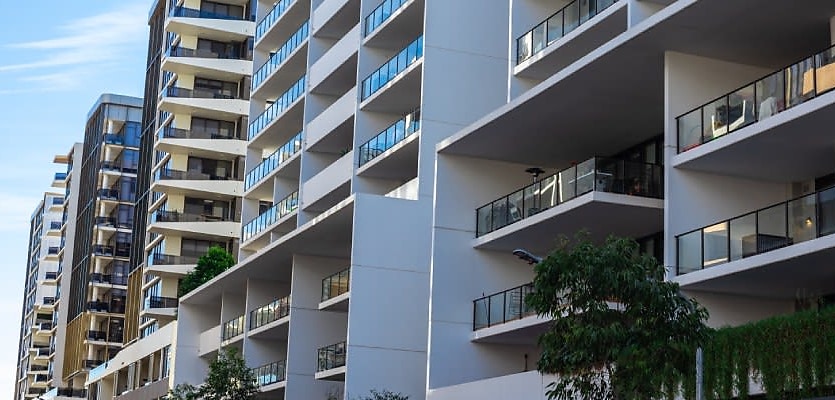If designed well, apartments can make good family homes. So why do unit designs continually miss the mark?
The archetypal image of an Australian family home is a detached house on its own generous block, but this is becoming increasingly out of touch with reality.
The past few years have seen an influx of young families moving into city apartments, with those who continue to cling onto the backyard dream leaving capital cities in droves.
In itself, the trend towards apartment living is not a problem.
“We know that good-quality, well-designed apartments can make excellent homes for families with children,” said Professor Philip Oldfield, head of the School of Built Environment at the University of NSW (UNSW).
However, new research from UNSW showed that too few new apartments meet these criteria.
A survey of over 350 Sydney apartments and interviews with architects, developers and residents found that the layout needs of developers are consistently prioritised over the needs of the families who call these apartments home.
Over 80 per cent Sydney apartments are one- and two-bedroom units, and over half are “centre-shared space types”, meaning rooms branch off from common living spaces without a hallway or corridor.
In contrast, parents with children prefer larger living spaces, a greater number of bedrooms, and an inner hallway or corridor.
“Parents with younger children want bedrooms closer together for supervision, while families with older children often want bedrooms further apart for more privacy,” explained the study’s lead author, Dr Hyungmo Yang.
Professor Oldfield and Yang noted that the profound mismatch between the needs of families and the spatial configuration of their homes reflects the priorities of developers.
“Generally, developers focus more on the number of bedrooms and on location than on architectural design or room layout,” said Professor Oldfield. “They prefer generic, standardised apartment layouts that meet the minimum regulations because they’re cheaper to make and easier to sell.”
Outdated misconceptions about resident demographics also influence unit designs.
“This idea that apartments are not for families and are just for young working professionals is not true anymore, so we must build apartments for the diverse spectrum of people who live in them,” Professor Oldfield said.
The researchers recommended a greater emphasis on flexible layouts, such as moveable internal walls and internal furniture, to allow room numbers and sizes to change according to the evolving needs of occupants.
“Apartment design with flexibility could better meet the needs of all types of residents and ultimately contribute to a better reputation resulting in more developer profit,” Yang said.









You are not authorised to post comments.
Comments will undergo moderation before they get published.